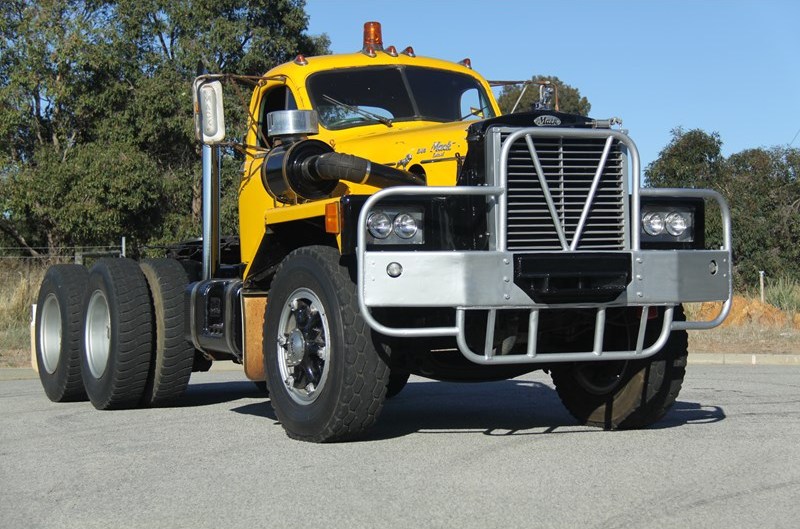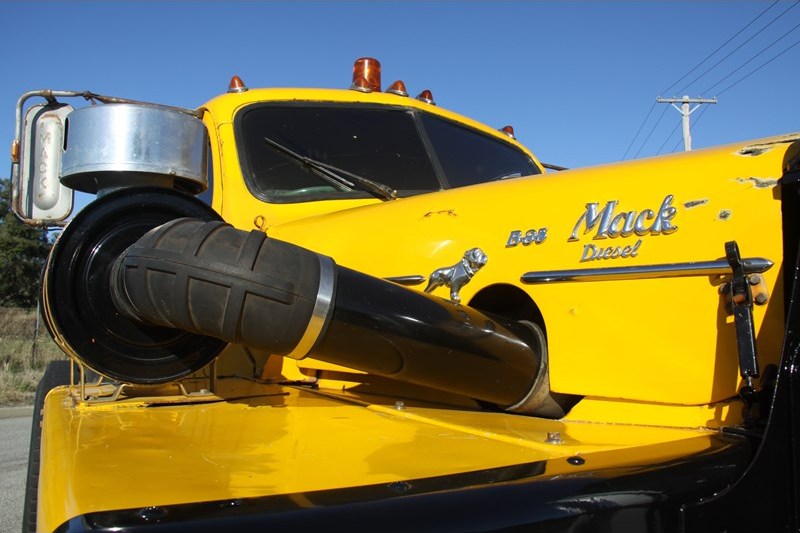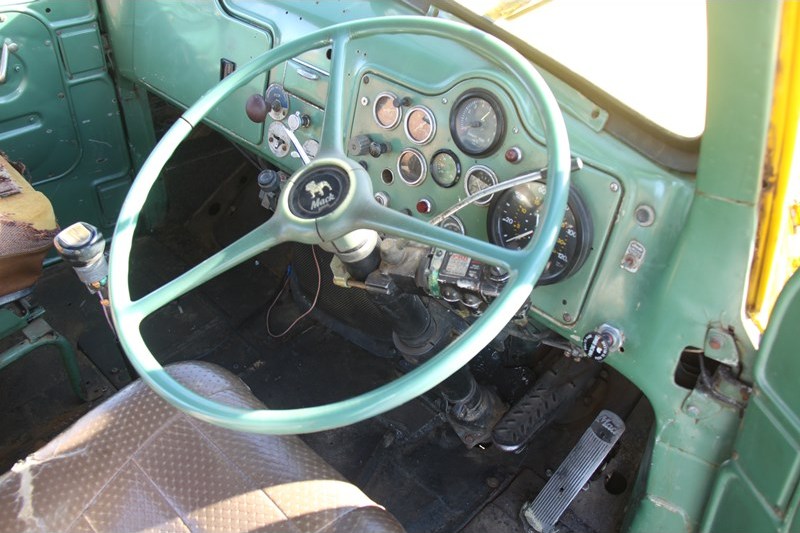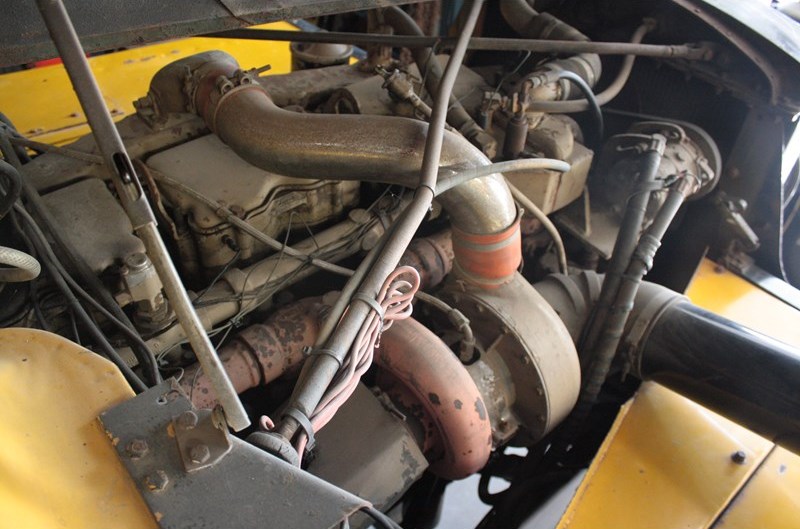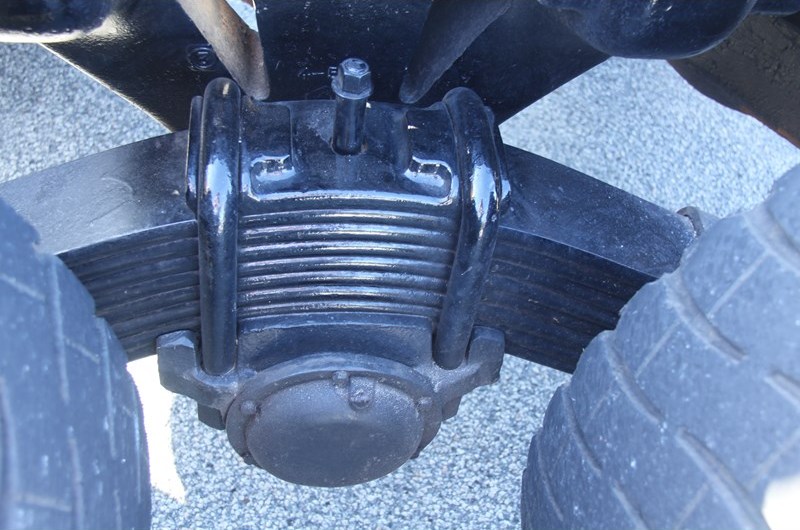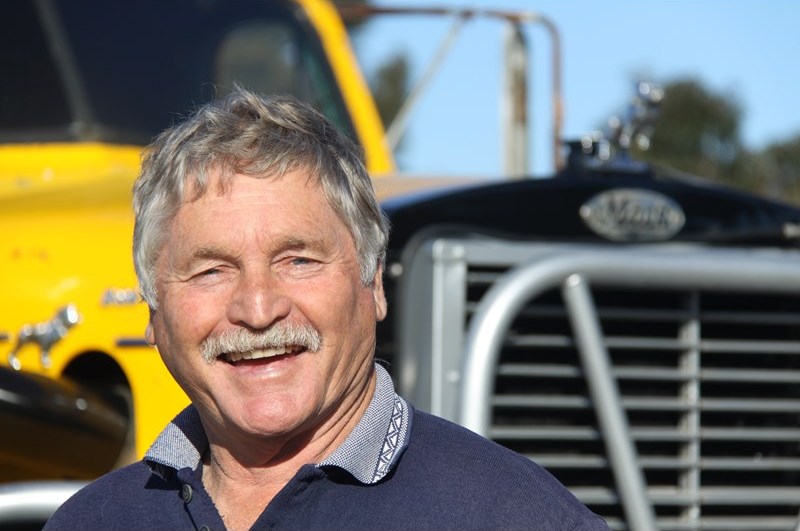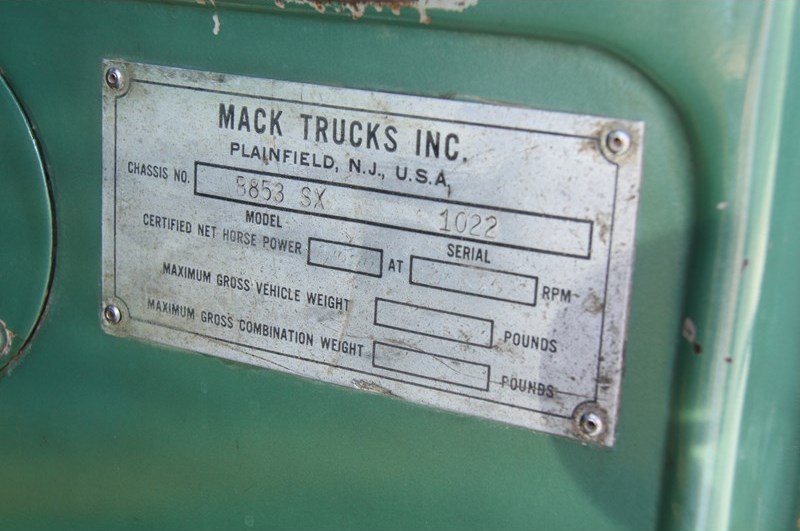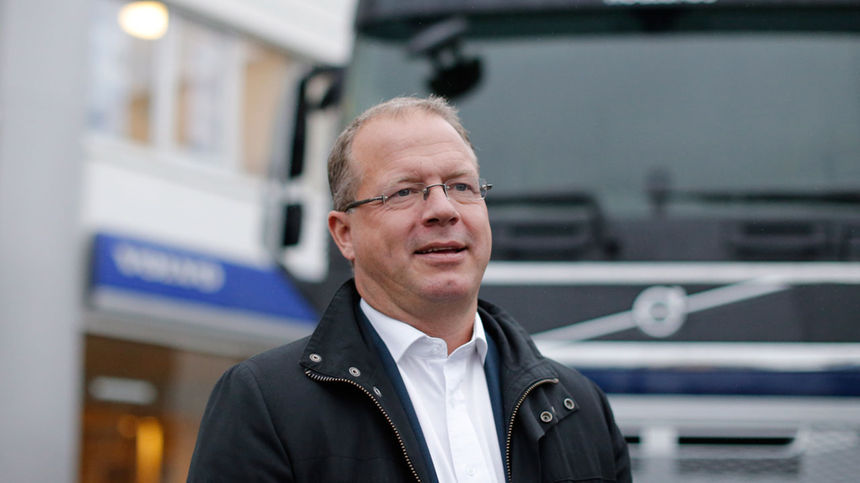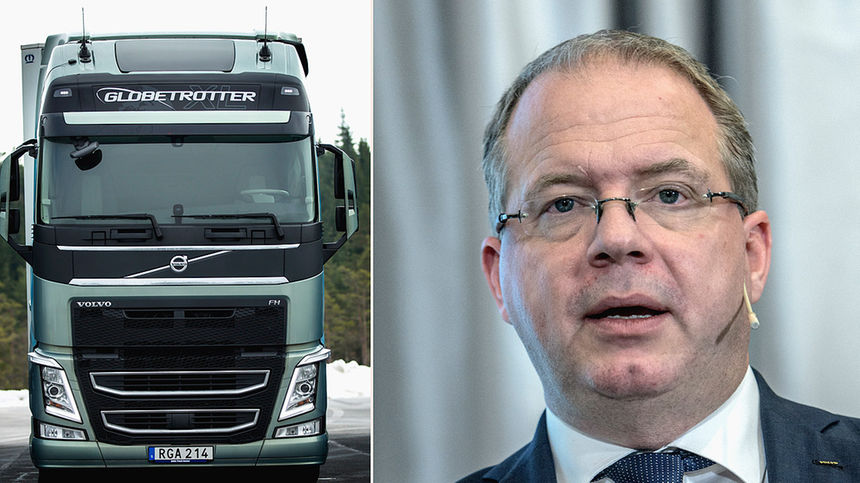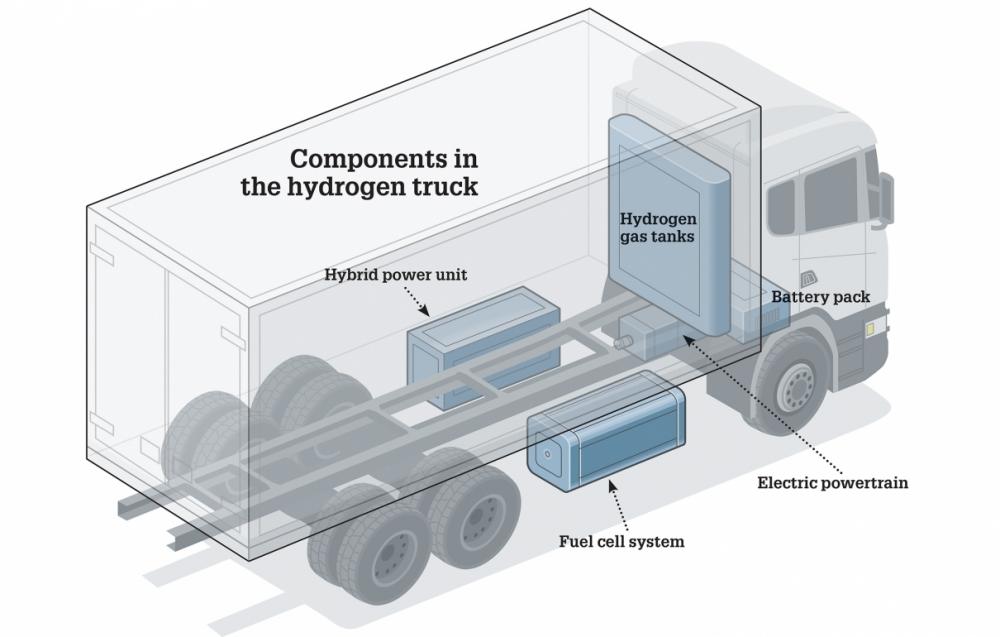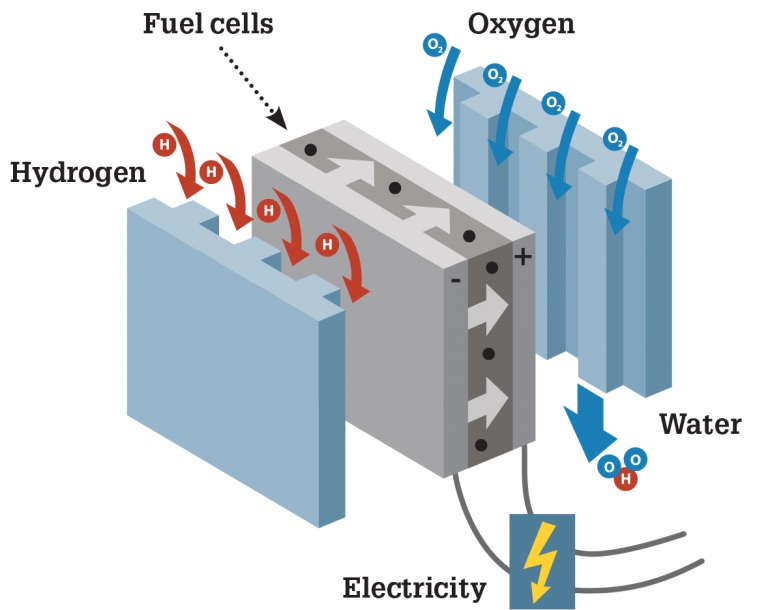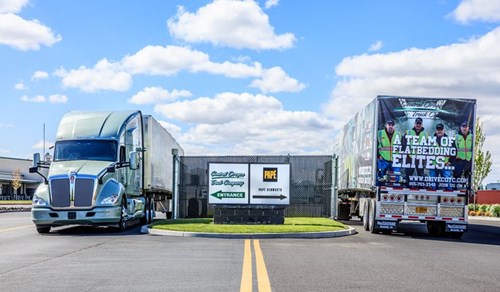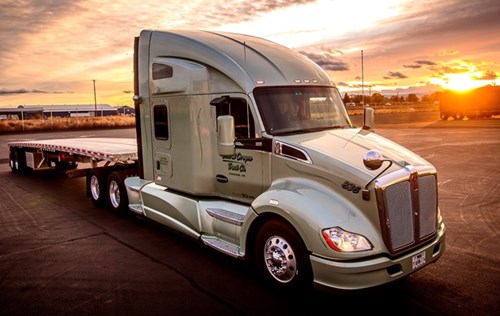
kscarbel2
Moderator-
Posts
17,893 -
Joined
-
Days Won
86
Content Type
Profiles
Forums
Gallery
Events
Blogs
BMT Wiki
Collections
Store
Everything posted by kscarbel2
-
MAN Truck & Bus Press Release / May 24, 2017 .
-
International team uncovers mechanisms of VW, Fiat Chrysler software defeat device code Green Car Congress / May 24, 2017 An international team of researchers has uncovered the mechanisms of two families of software defeat devices for diesel engines: one used by the Volkswagen Group to pass emissions tests in the US and Europe, and a second found in Fiat Chrysler Automobiles. To carry out the analysis, the team developed new static analysis firmware forensics techniques necessary automatically to identify defeat devices and confirm their function. After testing some 900 firmware images, the researchers were able to detect a potential defeat device in more than 400 firmware images spanning eight years. Both the Volkswagen and Fiat vehicles use the EDC17 diesel ECU manufactured by Bosch, the researchers noted. Using a combination of manual reverse engineering of binary firmware images and insights obtained from manufacturer technical documentation traded in the performance tuner community, the researchers identified the defeat devices used, how the devices inferred when the vehicle was under test, and how that inference was used to change engine behavior. “Notably,” the team wrote in a paper presented at the 38th IEEE Symposium on Security and Privacy this week, “we find strong evidence that both defeat devices were created by Bosch and then enabled by Volkswagen and Fiat for their respective vehicles.” During current emissions standards tests, cars are placed on a chassis equipped with a dynamometer. The vehicle follows a precisely defined speed profile that tries to mimic real driving on an urban route with frequent stops. The conditions of the test are both standardized and public. This essentially makes it possible for manufacturers to intentionally alter the behavior of their vehicles during the test cycle. The code found in Volkswagen vehicles checks for a number of conditions associated with a driving test, such as distance, speed and even the position of the wheel. If the conditions are met, the code directs the onboard computer to activate emissions curbing mechanism when those conditions were met. Electronic engine control has also made it easier to circumvent emissions testing by implementing a defeat device in software. The black box nature of emissions testing makes it nearly impossible to discover such a software-based defeat device during a test, forcing regulators to rely on heavy fines to discourage cheating. Unfortunately, as the Volkswagen case illustrates, it can take many years to discover such a defeat device. Given the ultimate limitations of testing, we are led to consider whether we can detect defeat devices using software verification techniques. Unfortunately, verifying complex software systems is a difficult problem in its own right, more so for a cyber-physical system like a modern automobile. In our case, the setting is also adversarial—rather than trying to find bugs, we are looking for intentional attempts to alter a system’s behavior under test conditions. This paper aims to be a first step in cyber-physical system verification in an adversarial setting with two case studies of automobile defeat devices and binary analysis techniques to identify verification- critical code elements across multiple software revisions. —Contag et al. Computer scientist Kirill Levchenko led the research effort at UC San Diego. The work, supported by the European Research Council and by the US National Science Foundation (NSF), started when computer scientists at Ruhr University, working with independent researcher Felix Domke, teamed up with Levchenko and the research group of computer science professor Stefan Savage at the Jacobs School of Engineering at UC San Diego. Savage, Levchenko and their team have extensive experience analyzing embedded systems, such as cars’ onboard Engine Control Units for vulnerabilities. The team examined 900 versions of the code and found that 400 of those included information to circumvent emissions tests. A specific piece of code was labeled as the “acoustic condition”—ostensibly, a way to control the sound the engine makes. But in reality, the label became a euphemism for conditions occurring during an emissions test. The code allowed for as many as 10 different profiles for potential tests. When the computer determined the car was undergoing a test, it activated emissions-curbing systems, which reduced the amount of nitrogen oxide emitted. The Volkswagen defeat device is arguably the most complex in automotive history. —Kirill Levchenko Researchers found a less sophisticated circumventing ploy for the Fiat 500X. That car’s onboard computer simply allows its emissions-curbing system to run for the first 26 minutes and 40 seconds after the engine starts—roughly the duration of many emissions tests. We implemented our approach in a tool called CURVEDIFF. Given that we perform an intra-procedural analysis, we might miss certain ways how a defeat device can be implemented and an inter-procedural analysis could enhance the soundness of our implementation. Furthermore, our analysis can be extended to take more primitive building blocks such as timers and multiplexers into account to deepen the knowledge about the relation of various components in the detection logic. —Contag et al. The study draws attention to the regulatory challenges of verifying software-controlled systems that may try to hide their behavior and calls for a new breed of techniques that work in an adversarial setting.
-
Software update can fix diesel emissions, FCA lawyer says Reuters / May 24, 2017 WASHINGTON -- Fiat Chrysler Automobiles NV believes a software update can address U.S. regulators' contention that its diesel vehicles are producing excess emissions, a lawyer for the company said at a court hearing on Wednesday. The lawyer admitted no wrongdoing by the Italian-American automaker, however. The Justice Department filed a civil suit on Tuesday accusing Fiat Chrysler of illegally using software to bypass emission controls in 104,000 2014-16 diesel and labeled the software "defeat devices." Robert Giuffra, a lawyer representing Fiat Chrysler, said at a hearing in San Francisco that regulators' concerns could be resolved with new software without a need for any new hardware. Giuffra said the company does not concede that the 104,000 vehicles emitted excess emissions. He said there were very complicated regulations governing whether auxiliary emissions control devices should have been disclosed to regulators. Regulators could approve the company's proposed software update very quickly as part of certifying 2017 diesel models to allow them to go on sale, potentially in a few weeks, Giuffra said. He added that he expects the same fix will address concerns for the 104,000 2014-16 vehicles. A Justice Department lawyer, Joseph Warren, said a decision could take longer, but said the government wants to move quickly. The EPA and California Air Resources Board accused Fiat Chrysler in January of illegally using undisclosed software to allow excess diesel emissions in 104,000 U.S. 2014-16 Jeep Grand Cherokees and Dodge Ram 1500 trucks in a notice of violation. Fiat Chrysler said in a statement it does not believe the software update would impact performance or fuel efficiency. The notice was the result of a probe that arose out of regulators' investigation of rival Volkswagen AG's excess diesel emissions. U.S.-listed Fiat Chrysler shares, which fell 4.1 percent on Tuesday, closed up 2.3 percent in trading Wednesday to $10.56. Fiat Chrysler faces more than 20 lawsuits from dealers and owners over the alleged excess emissions. U.S. District Judge Edward Chen said at the hearing he would not delay numerous civil suits. He is also overseeing suits filed against Robert Bosch stemming from its role in developing the Fiat Chrysler diesel engines. "The public interest demands that we move forward quickly," Chen said. Chen has scheduled hearings in June to pick lead attorneys to represent owners and to name a settlement master.
-
GM accused in lawsuit of using VW-like defeat devices Bloomberg / May 25, 2017 GM says it will 'vigorously defend' itself General Motors was accused of putting defeat devices in its trucks to beat emissions tests, the sixth carmaker linked to diesel cheating scandal since 2015, when Volkswagen AG admitted to installing software to bypass pollution rules. People who own or lease more than 705,000 GM Duramax diesel trucks filed a lawsuit Thursday, claiming GM installed multiple such devices in two models of heavy-duty trucks from 2011 to 2016. The 190-page complaint is littered with 83 references to VW, and asserts that the environmental damage caused by each truck could surpass that of the German automaker’s vehicles. GM’s cheating allowed its trucks to pass U.S. inspections, even while they spewed emissions two to five times the legal limit under regular driving conditions, according to the complaint filed in U.S. District Court in Detroit. "These claims are baseless and we will vigorously defend ourselves," GM said in a statement. "The Duramax Diesel Chevrolet Silverado and GMC Sierra comply with all U.S. EPA and CARB emissions regulations." The company's shares fell 1.8 percent to close at $32.60. Plaintiffs' lawyers The lawsuit was filed by several plaintiffs' law firms including Hagens Berman Sobol Shapiro, which was involved in similar litigation against VW and helped reach multibillion-dollar settlements with that automaker. "GM claimed its engineers had accomplished a remarkable reduction of diesel emissions,” attorney Steve Berman, a managing partner at Hagens Berman, said in the complaint. Berman has also represented drivers and dealerships against Fiat Chrysler Automobiles. “These GM trucks likely dumped as much excess poisonous emissions into our air as did the cheating Volkswagen passenger cars.” Excessive emissions from the GM vehicles exposed the general public to noxious levels of smog, according to the complaint. Diesel engines, while more fuel efficient, produce greater volumes of nitrogen oxide pollutants, or NOx. During on-road testing the diesel trucks polluted at levels beyond legal limits and higher than their gasoline counterparts, according to the complaint. The lawsuit, which seeks class-action status, underscores questions about the credibility of clean-diesel technology. This week, the U.S. Justice Department sued Fiat Chrysler, alleging violations of clean-air rules. Daimler AG is the target of a German probe related to diesel emissions, and French carmakers Renault SA and PSA Group are both being investigated in their home country. Bosch implicated Technology provider Robert Bosch GmbH, which was named as a co-defendant by consumers who sued VW, is also defendant in the GM case, described in the complaint as “an active and knowing participant in the scheme to evade” emissions standards. A Bosch representative didn’t immediately respond to a request for comment on the GM suit. Representatives of the Justice Department and the Environmental Protection Agency didn’t immediately respond to requests for comment. Barclays Capital, in a report issued after the lawsuit became public, said the risk of GM having to issue a stop-sale order on the trucks appears to be low. "Given this is coming from a class action litigation firm, it could just be ‘fishing’ for a settlement around charges of deceptive advertising," the report said. "We’d only know that it’s more serious if the EPA steps in, as they did in the cases of FCA and VW." But the analysts authoring the report said they "have a tough time seeing this issue easily fading away, which could add an overhang to GM stock on top of cycle and secular disruption concerns." The case is Fenner v. General Motors LLC, 17-cv-11661, U.S. District Court, Eastern District of Michigan (Detroit).
-
Trump said he would save jobs at Carrier. The layoffs start July 20. The Washington Post / May 24, 2017 Carrier, the company President Trump pledged to keep on American soil, informed the state of Indiana this week that it will soon begin cutting 632 workers from an Indianapolis factory. The manufacturing jobs will move to Monterrey, Mexico, where the minimum wage is $3.90 per day. That was never supposed to happen, according to Trump's campaign promises. He told Indiana residents at a rally last year there was a "100 percent chance” he would save the jobs at the heating and air-conditioning manufacturer. About 1,400 positions were on the chopping block, per company estimates. Over the past year, Trump has claimed he could maintain at least 1,100 of those jobs in the United States. But on Monday, the company gave official notice to Indiana officials that it would start laying off workers at the factory on July 20 and keep slashing staff until approximately 800 factory employees remain. “This action follows a thorough evaluation of our manufacturing operations,” wrote Steven Morris, a Carrier manager in Indianapolis, in a memo Indiana’s Department of Workforce Development received Monday,“and is intended to address the challenges the business faces in a rapidly changing industry.” The dismissals, he added, are “expected to be permanent.” Trump’s saga with Carrier began last spring, when he declared to an Indianapolis crowd that he would stop the company from uprooting in search of cheaper labor. “Here’s what’s going to happen,” Trump said at the rally. “They’re going to call me, and they are going to say, ‘Mr. President, Carrier has decided to stay in Indiana.’” He kept going. “One hundred percent,” Trump said. “It’s not like we have an 80 percent chance of keeping them or a 95 percent. 100 percent.” After the election, Trump took credit for rescuing the Carrier jobs, tweeting on Thanksgiving that he had called the company’s leadership to cut a deal. United Technologies, Carrier’s parent company, agreed to spare some of the positions in exchange for $ 7 million in state tax credits. (If the company outsourced any of those jobs over the next 10 years, it would have to pay back the money, according to the Indiana Economic Development Corp.) A celebratory Trump visited the factory in December and announced that, thanks to his negotiating, more than 1,100 of the jobs would stay in the heartland. “Carrier stepped it up, and now they’re keeping over 1,100 people,” Trump told an audience of cheering factory workers. He said those numbers could go even higher, noting that United Technologies had agreed to invest roughly $16 million into updating the plant. “And by the way, that number is going to go up substantially as they expand this area, this plant,” Trump said. “The 1,100 is going to be a minimum number.” But later that month, Greg Hayes, chief executive of United Technologies, admitted that the $16 million investment would go toward automation. “What that ultimately means is there will be fewer jobs,” he told CNBC's Jim Cramer. Chuck Jones, president of the United Steelworkers Local 1999, which represents Carrier employees in Indianapolis, provided further evidence that Trump had inflated the number of jobs that would remain in Indianapolis. Only 800 Carrier employees would be able to keep their jobs — 770 factory workers plus 30 or so more employees, counting supervisors, according to the union count. Jones told The Washington Post days later that Trump had “lied his a-- off.” He suspected the then-president-elect was including in his count design and engineering jobs that were never going to leave. Trump responded on Twitter by saying Jones had done a “terrible job” as union president. The full extent of the layoffs emerged Monday with Carrier's announcement of 632 job losses. The company told The Washington Post on Wednesday that “more than 1,000 jobs” will be preserved. However that figure included engineering and headquarters staff whose jobs were never scheduled to leave Indianapolis in the first place. “Carrier will continue to manufacture gas furnaces in Indianapolis, in addition to retaining engineering and headquarters staff, preserving more than 1,000 jobs,” the company said. “We have also designated our Indianapolis facility as a Center of Excellence for gas furnace production, with a commitment to making significant investments to continue to maintain a world-class furnace factory.” Holly Gillham, a spokesman for the Indiana Economic Development Corp., which was formerly led by Vice President Pence, said Monday's notice of jobs cuts was consistent with Carrier’s arrangement with the state and Trump. “As announced in December, Carrier is fully committed to retaining more than 1,000 jobs in Indiana over the next 10 years,” she said in an email. “By choosing to maintain these Hoosier jobs, Carrier is showing confidence in Indiana’s skilled manufacturing workforce.” According to Jones, 550 union members will be laid off, plus another 82 temporary factory staffers who were brought on to help with the transition. “Everyone knew it was coming, they just didn’t know when, exactly. It's closure to a bad situation,” Jones said. Michael Strain, director of economic policy studies at the right-leaning American Enterprise Institute, said Trump’s deal with Carrier offered a partial solution to a broader problem. American manufacturing employment, he noted, has dwindled for decades, especially in Indiana, where a third of workers held those jobs 50 years ago; the share today is closer to 10 percent. “I wouldn’t even call it a deal,” Strain said. “It seemed to be that Carrier was responding to political pressure and did so in a way that allowed them to make it through a political moment.” Trump, he said, benefited from the optics. “The president,” Strain said, “took the opportunity to position himself as a champion of American workers.” The number of Carrier jobs that will be eliminated is twice the size of the imminent job loss at Rexnord, the ball bearing factory about a mile away from the Carrier facility. Trump has slammed that company on Twitter, too, for outsourcing work to Mexico — but the firm has stuck to its plan and is dismissing the last hundred of its 300 employees in Indianapolis this summer.
-
Starting from Dry
kscarbel2 replied to LFD1935's topic in Antique and Classic Mack Trucks General Discussion
I always felt that the International Harvester-produced Cub Cadet's Kohler engine was one of its great attributes. With a Model 126/127 or 128/129, you had a 30-40 year tractor. I never had a Kohler fail to immediately start, or fail. -
CNN / May 24, 2017 A touching tale being shared across social media following Roger Moore's death. Londoner Marc Hayes recalled a story about the actor, who was best known for his portrayal of James Bond in the '70s and '80s, on Facebook. The post is a poignant reminder of why we idolize television and movie stars. Read it below: As a seven year old in about 1983, in the days before First Class Lounges at airports, I was with my grandad in NiceAirport and saw Roger Moore sitting at the departure gate, reading a paper. I told my granddad I'd just seen James Bond and asked if we could go over so I could get his autograph. My grandad had no idea who James Bond or Roger Moore were, so we walked over and he popped me in front of Roger Moore, with the words "my grandson says you're famous. Can you sign this?" As charming as you'd expect, Roger asks my name and duly signs the back of my plane ticket, a fulsome note full of best wishes. I'm ecstatic, but as we head back to our seats, I glance down at the signature. It's hard to decipher it but it definitely doesn't say 'James Bond'. My grandad looks at it, half figures out it says 'Roger Moore' - I have absolutely no idea who that is, and my hearts sinks. I tell my grandad he's signed it wrong, that he's put someone else's name - so my grandad heads back to Roger Moore, holding the ticket which he's only just signed. I remember staying by our seats and my grandad saying "he says you've signed the wrong name. He says your name is James Bond." Roger Moore's face crinkled up with realisation and he beckoned me over. When I was by his knee, he leant over, looked from side to side, raised an eyebrow and in a hushed voice said to me, "I have to sign my name as 'Roger Moore' because otherwise...Blofeld might find out I was here." He asked me not to tell anyone that I'd just seen James Bond, and he thanked me for keeping his secret. I went back to our seats, my nerves absolutely jangling with delight. My grandad asked me if he'd signed 'James Bond.' No, I said. I'd got it wrong. I was working with James Bond now. Many, many years later, I was working as a scriptwriter on a recording that involved UNICEF, and Roger Moore was doing a piece to camera as an ambassador. He was completely lovely and while the cameramen were setting up, I told him in passing the story of when I met him in NiceAirport. He was happy to hear it, and he had a chuckle and said "Well, I don't remember but I'm glad you got to meet James Bond." So that was lovely. And then he did something so brilliant. After the filming, he walked past me in the corridor, heading out to his car - but as he got level, he paused, looked both ways, raised an eyebrow and in a hushed voice said, "Of course I remember our meeting in Nice. But I didn't say anything in there, because those cameramen - any one of them could be working for Blofeld." I was as delighted at 30 as I had been at 7. What a man. What a tremendous man.
-
New Ford CEO Hackett conjures up memories of Mulally Automotive News / May 23, 2017 Déjà vu in Dearborn: Ford announces another outsider as 'transformational' CEO DETROIT -- It was déjà vu Monday at Ford Motor Co.'s world headquarters in Dearborn, Mich., as Executive Chairman Bill Ford Jr. took the stage and introduced Jim Hackett as the automaker's new "transformational," turnaround-tested CEO to reshape the company's culture. The last time Ford took the stage for such an announcement was three years ago this month. But instead of Hackett, he was accompanied by then-CEO Alan Mulally and his Ford-bred successor, Mark Fields, whom Hackett replaces. The atmosphere of the two events was noticeably different given the unexpectedness of this week's announcement compared with the long-awaited appointment of Fields in 2014, but Monday's event should have sounded familiar to industry onlookers. Ford’s comments, and the reasons he chose the industry outsider to lead the automaker, echoed those he made about former CEO Alan Mulallywhen announcing the aerospace veteran would succeed him as head of the automaker in September 2006. Back then, Ford touted Mulally's experience leading a revival at airline manufacturer Boeing Co., which included cutting thousands of jobs, enduring a strike and championing a successful new aircraft. He also noted Mulally's "personality and team-building skills that will help guide our company in the right direction." On Monday, Ford outlined Hackett's overhaul of Grand Rapids, Mich.-based furniture company Steelcase Inc., which he led for nearly two decades until early 2014. He is widely credited with transforming the corporate culture and cutting thousands of jobs to reshape the company's operations to focus on the "workspace of the future" while continuing the core business. "This is a time of unprecedented change," Ford said. "And time of great change, in my mind, requires a transformational leader, and thankfully, we have that in Jim." 'The right man' The Ford board's selection of Hackett to replace Mark Fields less than three years into his tenure comes a week after the automaker announced plans to cut 1,400 salaried jobs in North America and Asia, as it looks to impress Wall Street and reduce costs amid slowing sales and growing investments in new technology. With Hackett's appointment, Ford (both the company and great-grandson of founder Henry Ford) appears to be attempting to recapture the lightning in the bottle it had under Mulally. "I promised myself I wouldn't compare Jim to Alan this morning because it's not right," Ford said, citing they are "very different leaders for very different times" at the company. "I'll break my rule just this once. Alan really captured the hearts and minds of our employees and made them feel that not only could we win, but we were going to win and they were going to have fun on the journey. I think that's something very much you'll see from Jim." Ford reneged again on that promise when speaking on CNBC after the meeting about Hackett being the right leader for Ford's current situation, as Mulally "was the right man for that time." Uncanny similarities The similarities between the two executives -- separated by nearly 11 years -- were uncanny to the point that Mulally, who led Ford from September 2006-July 2014, was mentioned Monday at the event and by analysts nearly as much as Fields. “Hackett has gotten his feet wet with a unique opportunity to see Ford from the inside without drinking the Kool-aid,” said AutoPacific analyst Dave Sullivan. “Hackett brings that outside perspective that gave everyone a warm fuzzy feeling about Mulally.” Mulally was 61 when he took the reins of Ford in 2006. Hackett is 62. He was tasked with guiding the automaker through the greatest financial turmoil since the Great Depression, and successfully did so. He is credited with being one of the few outsiders to enter the auto industry and have a successful career as a CEO -- a steep reputation for Hackett to live up to. "In many ways, Mr. Hackett’s job may be more challenging than Mr. Mulally’s,” Morgan Stanley analyst Adam Jonas wrote in a note to investors on Monday. Hackett starts leading the automaker as it faces plateauing industry sales and arguably unprecedented pressure from Wall Street for the automaker to outline a clear strategy as it moves into becoming a “mobility” company -- efforts Hackett, a former Ford board member of three years, has led for the automaker since March 2016. "Given Ford’s poor share performance in recent months, it’s not very surprising that they should look for fresh leadership," said James Hodgson, of ABI Research. "What's really interesting is the fact that they should opt for the man who has spent over a year heading up their smart mobility efforts.” One Ford Under Mulally, Ford was viewed as having a clear and decisive plan, which led the company’s stock to rally to about 60 percent higher than it is today, despite reporting record profits and ambitious mobility efforts under Fields. Both Ford and Hackett commended Fields for his leadership, however when it came to future strategy, Mulally’s “One Ford” plan was the one mentioned. “It worked really well,” Hackett said. “In fact, we’re going to use parts of it in the way that we monitor our success.” He didn’t disclose what parts would be used, but added there would be changes, as the plan “doesn’t handle when there are lots of complex strategy questions.”
-
Owner-Driver / May 23, 2017 The B-model Mack was a mighty truck back in the day, and the B83 and B87 were the biggest dogs around. And B85’s are a rare dog indeed. Matt Wood drives the only B85 ever to arrive in Australia. Wool classers can tell what kind of year its been by just looking at the fibres in a freshly shorn fleece. And scientists can look at tree rings to see how the environment has shaped a tree over the decades of its life. But, it’s not often that you come across an old vehicle that not only still carries the scars of time and toil but also has an amazingly documented history. I’d be tempted to cut through the chassis rails of this extremely rare 1959 model B853 SX Mack and count the tree rings myself, however, I reckon that it’s owner, Des Hockley would have a slight issue with that! Truck Archeology Everywhere you look on this truck you see it bares the scars and sports the modifications that it’s acquired over it’s journey through the formative years of Australian trucking. It’s an archeological dig site on wheels. This truck was born in Plainfield New Jersey in November 1959 and is one of only 45 B85SX’s made globally. It’s also the only one recorded as being delivered to Australia. The truck was built as a left-hooker then transported to the Mack branch in Queens, NY for right hand drive conversion. And by February 1960 the big Mack was on a boat bound for Champions in Adelaide. Its final destination was Mt Riddick station in the Northern Territory where it was put to work pulling stock crates through the never-never. As an aside that Plainfield NJ factory is still standing to this day, though it closed in 1962. The building still sports Mack logos on its door handles. There’s not a lot of obvious difference between a B85 and the slightly more common B87. Maybe someone out there smarter than me can spell it out! Most B87s delivered to Oz used a 335 Cummins for power, this B85 however, used a turbo-charged NH Cummins at 265hp. Some examples even sported a supercharger. Apparently both power plants were available in 85s and 87s. Mythical Monsters Just let that sink in for a minute. At a time when most Aussies were wheezing around the country in naturally aspirated petrol powered pommie lorries these things were monster trucks. Exotic mythical beasts that inhabited the uninhabited interior of the country or bellowed through isolated forests groaning under the weight of massive jarrah logs, or hauling earthmoving equipment. This B85 also shared the same 5x3 main and joey ‘box set up found in the B87. The Mack rear end housed gears that sported an eye wateringly short 9.11:1 ratio. With enough cable this thing could’ve raised the Titanic. Back in the States the B85 was primarily a severe duty rigid and was most commonly used as a fire truck platform. Turbo Troubles As you can see this truck also started life as a rigid, towing stock crate doubles on the Webb Brothers owned Mount Riddick station. The turbo Cummins however, while clearly before it’s time, was less than reliable. One station hand who drove it on occasion recalled, "It spent more time with the turbo off it than on it." A manifold blanking plate was made up so that when the turbo inevitably went bang, the driver could just pull it off, plug up the hole and keep driving. The big B then found its way into the hands of NT based RPM Haulage (later to become Tanami Transport) again as a rigid pulling road train crates and also some drill rig moves. Around this time someone must of gotten sick of the problematic turbo Cummins and an 8V71NA Detroit was planted under the bonnet. Along with the heart transplant, the Mack scored a 15-speed overdrive ‘box that was slotted in front of a 3-speed Spicer joey. It’s also said to have done some work for the Co-Ord co-operative at some stage. But it’s uncertain whose banner it was flying at that time. Go West The story of how this truck caught the attention of West Australian based heavy haul pioneer Vince Ridolfo isn’t really known. However, by the mid-1970’s the truck ended up a part of the Perth based Ridolfo Transport fleet. Ridolfo Transport was heavily involved in carting timber for the State Electricity Commission and heavy haulage for infrastructure projects. The Mack was cut down into a prime mover and sent out on heavy haulage float work. As WA progressed into a resources driven infrastructure boom, a lot of big gear ended up on the roads. Probably the most well-known big Mack operator in that part of the country at the time was Bell Bros, Who operated a fleet of B87s and B83s. This Big B however, was not overly happy with the GM under that high riding snout. In short, it was a dud. With a big load on it’s back it was allegedly lucky to make it more than 100km from the depot before losing its will to live. So the dud 871 made way for a new 871. While working for Ridolfo it also scored a sleeper cab and remarkably, even air conditioning! Somewhere along the line it also scored dual headlights as opposed to the old school single candles. Which kind of makes it look like the bastard offspring of a B model and a Scammel! Subby Days Perth based Des Hockley bought the truck in 1980 after his Peterbilt turned turtle in the bush, which very nearly squashed him in the process! The Mack was quickly put to work hauling massive logs, but before long Des started subbying to Ridolfo, towing a 100 ton rated Rogers low loader and dolly made out of a World War 2 tank transporter. The old girl, with Des behind the wheel, made a crust by hauling equipment to mine sites dotted around WA. Des wanted to get his crashed Peterbilt back on the road, being a 351, cabs were pretty scarce to say the least. So Des rebuilt the Pete with a W900 cab and bonnet to get it back on the road. The B85 was then sold to WA heavy hauler, Sam Graham in the mid-1980s. Cummins Time Sam gave the GM the flick and dumped the old joey box. Now the B was armed with a 420hp 14 litre NTC Cummins out of a dump truck with a heavier 1460lb/ft 15-speed overdrive and a 4-speed air shift 1241C Spicer joey. The diffs were rebuilt and it scored an even shorter 10.11 gear set. Pretty impressive specs for a truck that was then already nearly 30 years old. This thing was rated to 200 tonnes! It was then put to back on the road where it continued to work up a sweat on heavy haulage work. By the time Des got his hands back on the yellow beast some 30 years later, the Mack had lost it’s auxiliary transmission. Though it still sported the Cummins and the 15 O/D ‘box. As it sits there’s been very little restoration. Apart from some little touch ups, the Mack still appears as a rolling timeline of a boom time in West Australia’s development. From hauling outback cattle and oil rigs, to hauling timber and machinery, this B85 has survived stupendously big loads, heat, dust and no doubt mud. Since Des got the keys back he has spent quite a bit of time collecting the history of this rare beast and piecing together it’s past. Drive Time It’s quite a climb up into the driver’s seat of the Mack. But I settle behind that massive wheel and peer through the split screen at the long eared dog on the bonnet. There’s an undeniable charm to the B-model cockpit. It’s just so evocative of the era with its curved panels and pressed metal trim. With the Cummins rumbling away under that imposing snout I grab 2nd slot in bottom ‘box and slowly let the clutch out. I’d already made a boo-boo. With that massively short rear end there’s no need for low-range when driving it bob tail. I could work my way through the entire bottom box and still only be moving at walking pace. With this ‘box and these diffs the yellow B is gear bound at about 83km/h. Which given the size of this big old monster is plenty fast enough! I stop and flick the button up and try again. And we’re in business. Call Of The Wild It’s hard not to love being behind the wheel of one of these jiggers. The landscapes rolls past and the tacho needle climbs and I grab another cog. The 14 litre answers with a turbo-charged bellow and a very un-PC cloud of smoke erupts from the stack. What I can’t get over is just how well this old truck drives. Sure it’s helped by the modernized driveline, but in this day and age it’s hardly state of the art. Only having one gear stick to contend with obviously is a help for a rookie like me. This old truck has followed wheel ruts in the sand, negotiated narrow bush tracks and has ground it’s way up mine haul roads in the searing heat. You can feel the history underfoot as you grab another cog and let the Cummins sing. Of course I couldn’t help but flick the switch labeled Jacobs. The answering aural assault is reminiscent of a vintage B-29 bomber firing up its supercharged engines. Anti-social? Yes. Fun? Definitely. I can only imagine what it would’ve been like seated in that aircraft-like cockpit dragging 100 tonnes up a grade in mid-summer as the drive wheels pull clods of blacktop off the road surface. The big B also rides and handles surprisingly well. It’s not like it’s had a bottom up resto. This is in part down to a couple of spring leaves being removed from the camel back rear end. The original power steering is a help as I spin that massive wheel. Sure this truck is a survivor. And the rivet counters out there will be annoyed at this truck’s lack of originality. But it would be a shame to rub back and erase the layers of paint and modifications to this truck. This B-Model tells a story and every modification that has been made over the last 5 decades has been done for a reason. Either to make it more suited to the job at hand or more live able for the driver. And that really is the story of this Big Bad Bastard B. It’s a grumbling whistling portrait of sheer brute force, bush engineering and tenacity. It’s also a history lesson on wheels. And after all, tenacity is what created the Mack bulldog legend in the first place. .
-
Big Rigs / May 24, 2017 This year the Sydney to Yass journey, which takes place every two years had over 308 historic commercial trucks participate in the charity event. Organiser Bruce Gunter said the event which started as just a pipedream has grown in the past few years. "It all started 2010, when I was talking with my dad who was an interstate driver,” Mr Gunter said. "He spoke about the old Hume, I ended up talking to a few blokes who could be keen on it we decided to advertise to see if anyone wanted to join; we ended up with 143 trucks on it. "We did it by the skin of our teeth, winged it and in the end the event raised far more money than we ever expected,” he said. "There are beautiful bits of gear on the road, and it's getting bigger and bigger,” he said. "It's a nice shot in the arm too and a way of commemorating the history of the transport industry. "And yeah dad thinks it's awesome,” he laughed. At his 4th event Bruce believes the team has got the event running like a well old machine. Along with having a great time the group also managed to raise $40000 to assist with Autism Spectrum Australia (ASPECT), a charity close to Bruce's heart. The money will help buy iPads for the schools to help these children learn through colours and pictures. The town of Yass also received $5000 to help build a playground for children with disabilities. Award Winners The Bob Speechley Heritage Preservation Award, was awarded to Bob Taylor for his International and single axle McGrath. which was purchased by his father in May 1972. The unrestored original, powered by a 160hp Cummins was the first truck that Brian drove, and the first vehicle he used during his first interstate run. John Ross won the 'Chris Pezzutti Memorial Award' for Best Working Kenworth. John's 86 W Model Kenworth has been rebuilt by him, with Airglide Suspension and a Signature engine. The inaugural award commemorates Chris who passed away suddenly just over a year ago at 49 years of age. Biggest Tear Arse award was won by Brian Smith for ringing the neck of his 1922 TT Ford truck. all the way from Sydney to Yass. The Tony Colombrita Noisiest Truck Award was also given out this year in memory of Tony who passed away 18 months before the Haul. A huge supporter of the historic truck movement Tony's White 9000 has lived on through his daughter Toni Hurley who took part in the run. Photo gallery - https://www.bigrigs.com.au/photos/photo-gallery-24-05-2017-0709/52357/#/0
-
Dagens Industri / May 23, 2017 Increased service sales and further improved productivity will reinforce the positive trend for AB Volvo's profitability. "We have a broad improvement in the Volvo Group," says CFO Jan Gurander. At the beginning of the current decade, Volvo's Capital Markets Day characterized that the then Group Management gave wide-ranging commitments on how much the Group's operating margin would be improved. Now with Martin Lundstedt as CEO, Volvo does not give promises, but instead places all the focus on explaining to investors how Volvo works to improve its underlying profitability [i.e. the Scania way]. Ideally, the CEO speaks about the strategy to increase profitable sales of services. "In a normal market, service now accounts for 22-23 percent of our sales, and I see a big upside in that figure as we continue to work closer to the customer. Higher service sales are a receipt that we have a good relationship with our customers and increased service sales also lead to lower volatility in our performance, "says Martin Lundstedt. Other important areas for improving the profitability that Volvo raised on the capital market day is productivity improvements, new technology and decentralization, where responsibility for the results is delegated to individual brands and regions. "Connected vehicles, electric mobility and automation change our industry," says Lars Stenqvist, Volvo's Technical Director. "We must build confidence that we have a position for the future when there is a lot of transportation and infrastructure," says Martin Lundstedt. Volvo's underlying profitability is not only improved within the bright star of Volvo Trucks, but also within the Renault Trucks and UD Trucks brands, pointed out CFO Jan Gurander. "We reached blacks in 2016 and we expect to increase earnings in 2017. Based on the order intake in the first quarter, we estimate that our market share is on the rise," said Bruno Blin, chief of Renault Trucks. Volvo's Japanese truck brand UD Trucks has been weak with profitability since Volvo bought its business in 2010. But a detailed plan for raising profitability now gives results, according to UD Trucks head Joachim Rosenberg. "We are following our plan and are even ahead of schedule," says Joachim Rosenberg. Volvo construction machinery, VCE , which boosted its performance in the first quarter, is now benefiting from major action programs launched by Business Area Manager Martin Weissburg in 2014 and a better market in China. "Important to us now is to increase our market share in excavators," says Martin Weissburg. The market sentiment on the Volvo Group's most important markets is now at the same levels as the report for the first quarter of April, according to Martin Lundstedt. "Generally, it is the same underlying foundation in Europe, North America and China," he says to Di. Claes Nilsson, chief of Volvo Trucks, added that demand for heavy trucks remains at a high level that the heavy truck market in North America has bottomed out. "We are seeing signs of recovery and the stocks of new trucks have come down to a reasonable level. However, there is still a large variety of used trucks, "says Claes Nilsson. The Brazilian market is still very weak. "But we see some signs of improvements in Brazil, the mining sector is coming back and we are seeing more and more requests. In neighboring countries Peru and Argentina, demand is good, "says Claes Nilsson. .
-
Dagens Industri / May 23, 2017 Demand from Volvo Group's most important markets is now at the same levels as in the first quarter report, CEO Martin Lundstedt told Di. "Generally, it is the same underlying foundation in Europe, North America and China," he says to Di. In the report for the first quarter of April, Volvo reported a significantly improved order intake on trucks in North America and Asia. In addition, orders for heavy trucks in Europe increased from high levels, while the market for construction machinery improved globally. Since the report, the market situation has not changed according to Lundstedt. "In general, it is the same. With that said, I think the new normal is that we have to be on the go all the time because the horizons are getting shorter", says Lundstedt. On the stock exchange Volvo's share evolved brilliantly and interest in capital markets in Eskilstuna is record high. Never before has Volvo had so many guests on a capital market day. Do you feel worried that the stock market is building up owing to high expectations from you? "The important thing for us is to be consistent in our message of what we stand for," says Martin Lundstedt, pointing out four key points for it: "It is a matter of the stock market being aware of what lies behind the underlying improvement." "We continue to build trust by showing that we are more resistant to volatility in demand." "We have a clear and good view regarding the allocation of capital to the various stakeholders around the company." "The fourth is that we build confidence that we have a position for the future when there is a lot of traffic and infrastructure. It's about continuing to build confidence in the deal. " During the capital market day, Volvo's presentations focused on decentralization, service business, technology, continuous improvement and productivity. "We have a broad improvement in the Volvo Group. All business areas are improving, "says CFO Jan Gurander. .
-
Scania electrification projects: from hybrids to wireless charging
kscarbel2 replied to kscarbel2's topic in Trucking News
Hydrogen a fuel of the future? Scania Group Press Release / May 23, 2017 Why hydrogen fuel cells could be one of the solutions for a future of sustainable transport. Electrification, automation and various hybrid and alternative fuel solutions are already attracting a lot of attention. However, one possibility that has been overshadowed in comparison is hydrogen fuel-cell technology. And yet Scania’s efforts to drive the shift towards sustainable transport include work in this area, too. The company is in partnership with Norwegian goods wholesaler Asko to test hydrogen gas propulsion in trucks. The trucks are fitted with an electric powertrain, and electrical energy is converted from hydrogen gas in fuel cells on board the vehicles. The fuel-cell-powered truck or bus will always have a battery, and be hybrid. Therefore with this solution it can run at a more stable power level. The battery can capture moments when extra power is needed, and times when the vehicle needs to recuperate power from brake energy. Hedvig Paradis is the Project Manager in charge of Scania’s collaboration with Asko. With a PhD in fuel-cell technology from Lund University, she has been studying and working in this rapidly-evolving area for several years. She is excited by its potential. “Different customers in different regions around the world will need different solutions, and hydrogen fuel-cell technology can be one of those solutions. We can see for example in Japan, South Korea and California that they are pushing for hydrogen-based solutions, and building hydrogen gas stations,” she says. Zero-emission technology A major strength of hydrogen-based solutions is the fact that it is a zero-emission technology; only water is actually emitted locally by the truck itself. This is based on the fact that the hydrogen is produced in a renewable way. Another real positive for hydrogen fuel-cell vehicles, and a reason for the growing interest, is that they have attributes comparable to conventional vehicles, such as refuelling patterns and infrastructure build-up. That’s attractive to those who are wary of making the dramatic change some new technologies require. However, as with all new technologies, there are also challenges. “The technology is not so mature yet,” explains Paradis. “It needs us to take greater steps in a shorter time, such as trying to solve the issues of degradation and lifetime of the fuel cell.” Sustainable transport solution There’s also the central issue of how and where the hydrogen fuel is produced. “Hydrogen gas stations are not that developed yet, although there is more infrastructure emerging. Some, like Asko, are actually building their own refuelling stations so they are in control of their own ecosystem. There’s a need for sustainable solutions that have less environmental impact.” Added to this is the need for a lot of space on the truck or bus for the hydrogen tanks. The solution available today takes up a lot of volume to maintain a good range that could otherwise be used for transporting goods or people. Nevertheless, Paradis is confident that the technology will overcome these hurdles, and will establish itself as one of the sustainable transport solutions. “I believe there is a bright future for fuel cells,” she says. “It will certainly be one of the options for the future. We can see around the world that things are happening – in passenger vehicles, with different companies, with pilot fleets.” “I’m sure there will be different solutions for different regions, and one solution won’t necessarily fit all, but hydrogen fuel-cell technology will have its part to play.” How it works A fuel cell creates electricity by an electro-chemical process using hydrogen and oxygen. The electricity generated by the fuel cells powers the electric powertrain. The system has an integrated battery buffer. The only emissions are pure water. . -
DAF reveals the new DAF CF and XF - Pure Excellence
kscarbel2 replied to kscarbel2's topic in Trucking News
-
Kenworth TruckTech+ Helps Keep Central Oregon Truck Co. Rolling Kenworth Truck Co. Press Release / May 23, 2017 Onboard Diagnostics Increases Uptime for Oregon Flatbed Hauler REDMOND, Oregon - When drivers bring their trucks for servicing at the local Kenworth dealership, a service technician may run a single diagnostic test, or a battery of tests, to determine a single root cause. But with a Kenworth Class 8 truck equipped with Kenworth TruckTech+ Remote Diagnostics, the technician may be able to skip those diagnostic tests and start work immediately on solutions, by relying instead on real-time diagnostic data from the truck’s engine control module. “That greater visibility can help us maintain uptime, saving us potential revenue losses of upwards of $1,000 per day, when we have an incident or when a dash lamp is illuminated on one of our trucks,” said Josh Laughlin, maintenance specialist at Central Oregon Truck Co., which operates 242 T680s. “Kenworth TruckTech+ Remote Diagnostics increases our uptime by helping to pinpoint and handle service needs faster. With the data TruckTech+ collects, our dispatchers work with Papé Kenworth to produce solutions that may allow us to complete shipments, and schedule the servicing for when the driver returns to home base, or somewhere along the way when the driver is off-duty,” Laughlin noted. Kenworth TruckTech+ transmits vehicle diagnostics 24/7 to the fleet’s maintenance facility at its headquarters in Redmond, Oregon, and to Papé Kenworth. Company and dealer technicians and managers can view that information through the PACCAR Solutions web portal to help them determine how or when a specific issue should be addressed. But perhaps more important than the potential savings of time and money, Laughlin said the company maintains its reputation for on-time delivery performance, which is top priority for company managers, drivers and dispatchers. Central Oregon Truck Co. hauls loads for major manufacturers of building materials in the lower 48 states and Canada. “Being on time with deliveries in the construction and building industry is crucial because contractors may be relying on shipments to arrive at certain times at their delivery points so that projects stay on schedule,” Laughlin said. “If the deliveries are late, our customers may be facing huge penalties for holding up the projects.” Phil Taylor, vice president of maintenance for Central Oregon Truck Company, said the company and its drivers also greatly value the impact Kenworth TruckTech+ has had on driver productivity and performance. “Since TruckTech+ notifies us of potential issues as they unfold, we can plan any necessary maintenance around our drivers’ schedules and maximizes uptime,” Taylor said. “That way our drivers can continue on their way quickly. That can have a big impact on their paycheck and their satisfaction.” When one of the company’s Kenworth T680s was traveling under load in Canada in late March and early April, the system began alerting the company and the local Papé Kenworth dealer through email notifications about a potential fuel pressure issue. Brian Tate, Kenworth TruckTech+ Service Management program coordinator for Papé Kenworth, monitored the situation and as the number of email alerts increased, he contacted Laughlin and discussed options. Tate said by examining the truck’s service records, he could see that the fuel system was just about due for its next scheduled service. The TruckTech+ Service Management platform, powered by Decisiv, provides Tate and service staff members at Papé Kenworth and other Kenworth dealerships detailed chassis information, parts catalogs, service bulletins, plus warranty and repair histories to help them more quickly and efficiently diagnose, estimate and complete service work. “Based on the telematics data from TruckTech+ and our experience with the fuel systems, I was able to make the recommendation to continue driving, drop the load, and plan to service the truck at a more convenient time later that week,” Tate said. “Central Oregon Truck Co. decided to assign the driver a load that would allow him to return to his home base in Denver, where the truck could be brought to a dealership in the Kenworth dealer network for servicing during his 34-hour restart.” As the week wore on, the code alerts from the truck ECM became more frequent. To be on the safe side, Papé Kenworth’s Tate recommended that the truck go in for service before it reached Denver. “The truck’s fuel system was serviced and the problem was resolved,” Tate added. Since its introduction two years ago, Kenworth TruckTech+ Remote Diagnostics has quickly become an integral part of efforts by Kenworth and its dealers to help customers like Central Oregon Truck Co. maximize truck uptime by streamlining service and repair processes. More than 30,000 Kenworth trucks are equipped with Kenworth TruckTech+ and have traveled a combined 1.5 billion miles. “Kenworth TruckTech+ is a great tool for our company,” Laughlin said. “Anytime we can plan on when our trucks will be serviced rather than deal with the scheduling emergencies when trucks must be serviced, that’s a critically important benefit to our company’s operation.” .
-
Trump budget calls for drawing private highway funding, more tolls
kscarbel2 replied to kscarbel2's topic in Trucking News
War of Words Erupts over Trump's Call to Allow Interstate Tolls David Cullen, Heavy Duty Trucking / May 23, 2017 A 39-word statement in a just-released 6-page “fact sheet” on President Trump’s “infrastructure initiative” within his overall budget proposal has brought the toll vs. no-toll contenders out swinging. The bullet item calls for reducing the restriction on tolling of Interstate highways so as to “allow the States to assess their transportation needs and weigh the relative merits of tolling assets.” In the next sentence, the administration said that it also “supports allowing the private sector to construct, operate, and maintain interstate rest areas, which are often overburdened and inadequately maintained.” The International Bridge, Tunnel and Turnpike Association was quick to praise the Trump Administration for seeking to draw down the restriction against Interstate tolling that dates back over 60 years. “Today, the Trump Administration became the second straight White House to call for easing the ban on Interstate tolling and giving states the maximum flexibility needed to make the best funding decisions for their local transportation projects,” said Patrick Jones, IBTTA executive director and CEO. Jones said IBTTA wants “Congress to immediately join with the President to reduce burdensome regulations that prevent state and local governments from utilizing all available funding mechanisms. Toll financing may not be the answer for every highway, bridge, or tunnel project in the country, but the power of tolling is proven and effective. “Combined with the President’s proposed investment in infrastructure, tolling can provide valuable resources to the states to tackle transportation infrastructure projects,” he added. Not buying the administration’s proposal was the Alliance for Toll-Free Interstates. “We are very concerned about how heavily the Trump Administration wants to rely upon public-private partnerships to fund our roads and the idea of loosening the federal restriction on tolling interstate highways,” said ATFI Spokesperson Stephanie Kane. “As outlined in the proposed budget, leveraging $200 billion public dollars into a $1 trillion transportation plan will only be possible through widespread tolling to produce private sector profits.” Kane also argued that tolls are “the worst funding mechanism available and are a highly inefficient use of funds, as a significant portion of every dollar collected – typically 12-20% even with all-electronic tolling – goes to administrative costs and to private sector profits rather than building and repairing roads. “Tolling existing interstates is an idea that has been already considered and rejected,” she continued. “The now 19-year-old pilot program to toll existing interstates has failed in every state that has considered it. When the traveling public, businesses and local governments learn more about potential tolls in their area, they resoundingly reject the idea. Congress should heed this warning and not expand tolling.” Natso President and CEO Lisa Mullings also expressed umbrage at the twin tolling and private rest-stop funding proposal. “The proposals to toll Interstates and commercialize Interstate rest areas threaten the businesses that serve Interstate highway travelers, such as travel plazas, convenience stores and restaurants,” Mullings said. “Oftentimes, these businesses are the economic backbone of off-highway communities; these proposals therefore not only harm private companies but also thousands of local tax bases throughout the country.” Mullings also said that while “public-private partnership sounds innovative… what we need to understand is that public-private partnerships in the context of surface transportation are nothing more than toll roads. It would be great if we had a magic pot of money to pay for construction and maintenance of our roads. We don't. Under this proposal, the same people who have been paying fuel taxes to build and maintain these roads will have to pay tolls, too.” -
Commercial Carrier Journal (CCJ) / May 23, 2017 A 2018 fiscal year budget plan released Monday by the Trump Administration proposes slashing the Department of Transportation’s budget by nearly $17 billion annually by 2022, as well as allowing more tolls on U.S. Interstates and boosting efforts to draw private investors to fund highways. Trump’s proposal, “A New Foundation for American Greatness,” calls for $200 billion in infrastructure spending over 10 years. The $200 billion in outlays isn’t necessarily meant to fund projects directly, but instead to entice states, localities and private companies to inject $800 billion more into infrastructure funding. That would total $1 trillion, the infrastructure spending figure Trump consistently called for during his presidential campaign. Trump’s budget does not explicitly call for removing the Interstate tolling ban, but rather would allow states “to assess their transportation needs and weight the relative merits of tolling assets.” The budget also includes other initiatives meant to lure private investors, such as a removal of the $15 billion cap on tax-exempt bonds issued to private builders by the DOT. The White House budget proposal also says it supports greater private spending on rest areas by removing the current restriction on commercial rest areas. According to an outline issued by the Trump administration, private companies could “construct, operate and maintain interstate rest areas.” Trump said he will release more specifics on his infrastructure plan this year. The House’s Congressional Progressive Caucus, a group of Democrats, said they, too, plan to release an infrastructure proposal. It would counter Trump’s push for greater private spending by calling for ramped-up federal spending on highways and other infrastructure projects. Trump’s budget proposal, however, faces tough hurdles. Congress hasn’t passed a budget in several years, instead passing resolutions that continue prior-year funding levels over short-term periods. If Congress were to tackle a true 2018 fiscal year budget, it likely would take a different approach than Trump’s plan. Trump’s budget slashes federal spending overall, including big cuts to Medicaid, SNAP (food stamps), disability and other social programs. The DOT’s annual budget would drop from an estimated $79.4 billion for the 2017 fiscal year to an estimated $62.3 billion in 2022. The budget also calls for tax cuts and a balanced budget, according to projections from Trump’s team. However, achieving the balance requires an aggressive 3 percent annualized growth in GDP over the next five years — a high mark for an economy that’s seen only 1 percent to 2 percent growth since the Great Recession.
-
Fiat Chrysler sued by U.S. over excess diesel emissions Reuters / May 23, 2017 WASHINGTON -- The U.S. government has filed a civil lawsuit accusing Fiat Chrysler Automobiles of using software to bypass emission controls in diesel vehicles. The U.S. Justice Department suit, filed in U.S. District court in Detroit, is a procedural step that may ramp up pressure on Fiat Chrysler. Fiat Chrysler has denied any wrongdoing. FCA said in a statement that it is reviewing the complaint. It has been working with the EPA and California regulators to clarify issues related to emissions control technology in the 2014-2016 Jeep Grand Cherokee and Ram 1500 diesel vehicles. The automaker said it is "disappointed" that the government chose to file the lawsuit. "The company intends to defend itself vigorously, particularly against any claims that the Company engaged in any deliberate scheme to install defeat devices to cheat U.S. emissions tests," the statement said. FCA shares fell 4.1 percent to close at $10.32 on Tuesday. The suit also names Fiat Chrysler's diesel engine unit V.M. Motori SpA, which designed the engine in question. Reuters reported last week the Justice Department and EPA have obtained internal emails and other documents written in Italian that look at engine development and emissions issues that raise significant questions. The investigation has scrutinized VM Motori. FCA acquired a 50 percent stake in VM Motori in 2010 and the remainder in October 2013. The lawsuit states that FCA placed undeclared "defeat devices," or auxiliary emissions controls, in 2014-2016 Fiat Chrysler diesel vehicles that led to "much higher" than allowable levels of nitrogen oxide, or NOx pollution, which is linked to smog formation and respiratory problems. The suit seeks injunctive relief and unspecified civil penalties. EPA said in January the maximum fine is about $4.6 billion. Fiat Chrysler faces a separate ongoing criminal investigation on the emissions same issue by the Justice Department and probes by the U.S. Securities and Exchange Commission and many U.S. states. In January, EPA and California accused Fiat Chrysler of illegally using undisclosed software to allow excess diesel emissions in 104,000 U.S. 2014-2016 Jeep Grand Cherokees and Dodge Ram 1500 trucks. Fiat Chrysler said on Friday it plans to update software that it expects will resolve the concerns of U.S. regulators about excess emissions in those vehicles. The January notice was the result of regulators' investigation of rival Volkswagen, which prompted the government to review emissions from all other passenger diesel vehicles. Fiat Chrysler has applied for certification to sell 2017 diesel models from U.S. and California regulators and said it was in talks to win approval for a software update to address regulators' concerns about emissions in vehicles on the road. The software update would begin rolling out once the EPA and California Air Resources Board (CARB) approved it, Fiat Chrysler said Friday. FCA says it does not anticipate any impact on performance or fuel efficiency. A federal judge in California set a Wednesday hearing on a series of lawsuits filed by owners of vehicles and some dealers against Fiat Chrysler. ----------------------------------------------------------------------------------------------------------------------- U.S. Sues Fiat Chrysler, Accusing It of Using Software to Pass Emissions Tests The New York Times / May 23, 2017 The federal government filed a lawsuit against Fiat Chrysler Automobiles on Tuesday, accusing it of using illegal engine-control software to enable its diesel-powered vehicles to pass emissions tests. The filing occurred days after Fiat Chrysler proposed a modification to the software to ensure correct test results in hopes of resolving the issue. In a statement, the automaker said it was disappointed by the action and would defend itself against any claims that its software represents a “deliberate scheme to install defeat devices to cheat U.S. emissions tests.” The Environmental Protection Agency accused Fiat Chrysler in January of installing the software on about 104,000 Ram pickup trucks and Jeep Grand Cherokee sport utility vehicles sold from 2014 through 2016. Continue reading the main story In its complaint on Tuesday, the Justice Department noted that the engine controls in the Ram trucks and Jeeps are different from what are described in paperwork the company filed with the E.P.A. The features of the software, it said, “alone or in combination with one or more of the others, bypass, defeat and/or render inoperative” the vehicles’ emission control system, causing them to emit “emit substantially higher levels” of nitric oxide than allowed. United States officials view the Fiat Chrysler matter as less serious than Volkswagen, and stopped short of accusing the company of intentionally engineering the software to cheat on emissions tests. Filing the suit is seen as an effort to accelerate settlement negotiations, after the company outlined its proposal last Friday to reset the engine software in the affected vehicles. The suit was filed by the Justice Department’s environmental enforcement section in United States District Court for the Eastern District of Michigan. The emissions issue has essentially stopped Fiat Chrysler’s domestic sales of diesel-powered Ram trucks and Grand Cherokees. In 2015 and 2016, the company sold more than 50,000 diesel Ram pickups a year in the United States, making it by far the largest-selling diesel-powered light vehicle in the country. But the company has been unable to sell diesel vehicles in the United States for the current model year because the E.P.A. has not certified that they meet emissions regulations. Before any resumption of sales, the E.P.A. would have to test and approve the new engine software that the company has developed, a process that could take weeks or months. Once the software is certified, Fiat Chrysler could alert owners to the update by a recall or possibly a less formal customer-service campaign. The method will be determined in negotiations with the E.P.A. Either way, customers would be notified by mail and other means to bring their vehicles to a dealer to have the software updated at no charge.
-
KD 517 Cab lights
kscarbel2 replied to Keith S's topic in Antique and Classic Mack Trucks General Discussion
Are the original 38MO216 cab roof marker lamps no longer available from Watts ? -
Front fender mud flaps for B model
kscarbel2 replied to Freightrain's topic in Exterior, Cab, Accessories and Detailing
The front fender rear mud flap for a B-61 (regular B-model) was a 117QM185, attached with 130AX258 screws using a 71RU11084 retainer. -
Former James Bond actor Roger Moore dies aged 89: family Reuters / May 23, 2017 British actor Roger Moore, who won international fame playing secret agent James Bond, died on Tuesday aged 89, his family said on the actor's official Twitter account. His 12 years as James Bond, the British agent with a voracious appetite for danger and sex, made Moore a millionaire and a heartthrob the world over. "It is with a heavy heart that we must announce our loving father, Sir Roger Moore, has passed away today in Switzerland after a short but brave battle with cancer," his three children announced in a statement on the Twitter account. The son of a London policeman, Moore once said the upper-crust image he portrayed both on and off the screen was a carefully nurtured cover for his shyness and timidity. He also said he was terrified of playing the sex scenes which were a key part of the Bond movies. Moore's big breakthrough as an actor came in 1962, when he won the part of "The Saint" in a popular television series of the same name. In this role, he honed his image of the urbane Englishman with a stream of damsels to rescue from distress. In 1973 came the coveted part of James Bond, writer Ian Fleming's action man spy 007, who held cinemagoers across the world in thrall. The Bond films were said to have earned Moore 14 million pounds ($22 million). He moved to the United States to become a tax exile. "I don't see why a chap shouldn't do what he likes and live where he wants on his money, and the British government, which allows talent to go abroad because of taxation, has only itself to blame," he said in an interview in 1989. After handing over the role of Bond to Timothy Dalton, Moore went into semi-retirement, living a millionaire's life and traveling between his homes in Los Angeles, Switzerland and the south of France. In 1991, he became an ambassador for the United Nations Children's Fund. Moore is survived by his fourth wife, Scandinavian socialite Kristina "Kiki" Tholstrup, whom he married in 2002. Video - https://www.youtube.com/watch?v=KsnikLCXKv4
-
The Guardian / May 23, 2017 The much-loved English actor, who made his name on the small screen before taking on the mantle of 007, has passed away in Switzerland He was the epitome of the suave English gent, quipping sweatlessly in a bespoke three-piece suit, who enjoyed an acting career spanning eight decades. On Tuesday, Roger Moore’s children announced his death at the age of 89 in Switzerland, saying: “he passed away today ... after a short but brave battle with cancer”. Moore was best known for playing the third incarnation of James Bond as well as his roles in hit shows The Saint and The Persuaders. He also devoted a lot of his time to humanitarian work, becoming a Unicef goodwill ambassador in 1991. The actor was born in London in 1927 and, after working as a model in the early 50s, he signed a seven-year contract with MGM. His early movies weren’t particularly memorable, from Interrupted Melody to The King’s Thief, and it was a move to the small screen that brought Moore his first taste of success. “During my early acting years I was told that to succeed you needed personality, talent and luck in equal measure,” Moore said to the Guardian in 2014. “I contest that. For me it’s been 99% luck. It’s no good being talented and not being in the right place at the right time.” His first break in TV came in romantic adventure Ivanhoe which was the start of a set of hit shows for Moore, including western Maverick and crime shows The Saint and The Persuaders. The success of The Saint gave Moore an opening in Hollywood yet the resulting spy movies failed to ignite the box office. Moore had been approached to play the character of James Bond but scheduling conflicts with his television roles meant that he was never available. When Connery had stepped down from the role for good, Moore was asked again and made his first Bond film in 1973, the well-received Live and Let Die. He went onto star in another six films as 007 over a period of 12 years, making him the longest running actor in the role. When he finally retired from the role in 1985, he was 58. “Being eternally known as Bond has no downside,” Moore told the Guardian. “People often call me ‘Mr Bond’ when we’re out and I don’t mind a bit. Why would I?” After handing over the reins to Timothy Dalton, Moore took a break from the spotlight and didn’t make another film until 1990. From then on, his acting work became sparse, including small roles in Spice World and Boat Trip. In 1999, Moore was awarded a CBE which then became a knighthood in 2003, given to him for his charity work. Moore’s decision to become a Unicef goodwill ambassador was actually based on his friendship with Audrey Hepburn, who had also worked with the same charity. “The knighthood for my humanitarian work meant more than if it had been for my acting,” Moore said to the Guardian. “I’m sure some people would say, “What does an actor know about world issues?” But [working for Unicef] I’ve become an expert on things from the causes of dwarfism to the benefits of breastfeeding. I feel very privileged.” Moore also wrote two books about his time as Bond as well as two autobiographies, the most recent of which was 2014’s Last Man Standing. When asked by Time in 2012 who his favourite Bond was, he changed his mind from Sean Connery to Daniel Craig. “You can either grow old gracefully or begrudgingly,” he said to GQ in 2008. “I chose both.” Moore is survived by his wife, Kristina Tholstrup, and three children.
BigMackTrucks.com
BigMackTrucks.com is a support forum for antique, classic and modern Mack Trucks! The forum is owned and maintained by Watt's Truck Center, Inc. an independent, full service Mack dealer. The forums are not affiliated with Mack Trucks, Inc.
Our Vendors and Advertisers
Thank you for your support!



